Wednesday
Featured StoriesBe Yourself: How to Succeed in Life and Work
For better or for worse, we have no choice other than to be ourselves
by Shastri Gayle Van Gils
“Be yourself. Everyone else is taken.” ~ Oscar Wilde
 I have engaged in this inquiry over many years with clients who suffer from the feeling of being a fraud when talking about their work or accomplishments, even if they are successful in the eyes of society. Additionally, wanting to be different than—or more than—what we are can stop us from taking bold action in life, when we actually hold the answers that others need to hear. From personal exploration, I definitely know this place well within myself. Two facets of our self enable us to step more fully into being genuine:
I have engaged in this inquiry over many years with clients who suffer from the feeling of being a fraud when talking about their work or accomplishments, even if they are successful in the eyes of society. Additionally, wanting to be different than—or more than—what we are can stop us from taking bold action in life, when we actually hold the answers that others need to hear. From personal exploration, I definitely know this place well within myself. Two facets of our self enable us to step more fully into being genuine:
1) Our “Personal Self”: Identifying and staying true to our unique strengths, values and vision.
2) Our “Vast Self”: Uncovering and synchronizing with our deeper, more universal being, which gives energy, power and magnetism to our every endeavor.
In terms of our day-to-day or “Personal Self,” we have to believe in ourselves by embodying a real sense of worthiness. Self-belief inoculates us against the slings and arrows of others. “Nobody can make you feel inferior without your consent,” as Eleanor Roosevelt famously said. Yet even the strongest among us sometimes falls into doubts and critical self judgement. The good news is that this layer of self-confidence is trainable.
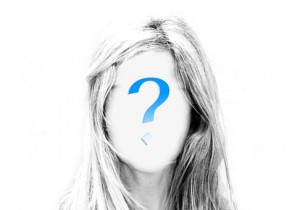 The key to being ourselves is self–awareness. A practice of mindfulness meditation is the best way of getting to know and really understand ourselves . The practice of meditation will be essential, especially for exploration of the second layer — “Vast Self” — where we delve below the surface of our personality.
The key to being ourselves is self–awareness. A practice of mindfulness meditation is the best way of getting to know and really understand ourselves . The practice of meditation will be essential, especially for exploration of the second layer — “Vast Self” — where we delve below the surface of our personality.
How to practice mindfulness and develop self-awareness: Take a comfortable seat with an upright posture. Bring your attention to the feeling of breathing in and out. When your mind wanders, gently bring your attention back to your breathing. I recommend that you practice the path of meditation with a qualified teacher, and, if possible, in the company of fellow practitioners. Over time, this practice will reveal the personal habits, stories and reactions that play over and over in your mind. It will give you the freedom to choose to take the actions suggested below.
“Personal Self”—Knowing ourselves and letting go of the barriers to success
Unmasking our inner critic. This is accomplished by really listening to the voices in our heads telling us that other people are better than us, that we can’t risk failure, that we need another credential before trying something new. Who is talking? Is it our parents’ voice, a teacher, a bully or a former boss? Whoever it is, it’s not coming from us, originally. When we were very young, we didn’t set these limits on ourselves. When we realize that we have taken on someone else’s limiting beliefs, it is much easier to deal with those voices and let them go. These are actually just stories, and when we see them as such, they no longer have a hold on us.
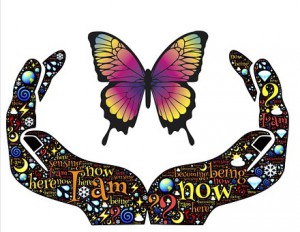 Assessing our strengths and values. Make a list of what you are good at and what you love doing. Make another list of all of your accomplishments and the areas in your life that people admire. Read this list and appreciate yourself! It is also important that we learn to articulate our values. A great way to discover our values, if we are not already familiar with them, is to think about the people we admire. Make a list of what you admire about them person. Most of us find that we share the values exhibited by the people we admire. Another way to discover your values is to take a Personal Values Assessment, like the one developed by the Barrett Values Center.
Assessing our strengths and values. Make a list of what you are good at and what you love doing. Make another list of all of your accomplishments and the areas in your life that people admire. Read this list and appreciate yourself! It is also important that we learn to articulate our values. A great way to discover our values, if we are not already familiar with them, is to think about the people we admire. Make a list of what you admire about them person. Most of us find that we share the values exhibited by the people we admire. Another way to discover your values is to take a Personal Values Assessment, like the one developed by the Barrett Values Center.
Acknowledging our weaknesses. If we are measuring ourselves against perfection, we are doomed to failure. The flip side of knowing our strengths is knowing what we don’t like to do, what we don’t do well, and where we need help. When we are honest with ourselves, we can relax and acknowledge that there are areas we don’t even wish to master! Often, cutting out these aspects from our self description is a way to feel totally authentic and in alignment with our strengths. Knowing both our strengths and weaknesses is key to good leadership and teamwork, as well as to self-esteem.
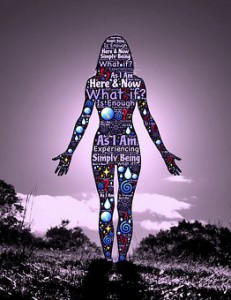 Practicing self-compassion. A growing body of research shows that engaging in self-criticism, or “being mean” to ourselves when we make a mistake or fail, actually sets us up for further failure. We’re just reinforcing negative thinking patterns, and imagining a poor outcome, rather than creating space for a fresh start. Emma Seppala, Science Director of Stanford’s Center for Compassion and Altruism Research and Education, discusses this in her book The Happiness Track.
Practicing self-compassion. A growing body of research shows that engaging in self-criticism, or “being mean” to ourselves when we make a mistake or fail, actually sets us up for further failure. We’re just reinforcing negative thinking patterns, and imagining a poor outcome, rather than creating space for a fresh start. Emma Seppala, Science Director of Stanford’s Center for Compassion and Altruism Research and Education, discusses this in her book The Happiness Track.
Seppala cites studies by psychologist Kristen Neff which suggest that a better approach is to treat ourselves as kindly as we would treat a friend or family member who has failed. We can let ourselves know that failing does not make us a bad person—everyone has setbacks and what we are going through is normal. We can let ourselves experience our feelings, without giving in to them. We can acknowledge that what we are going through is really hard, and we can send ourselves some compassion and love to get ourselves through it.
“Vast Self”—Underneath our individual stories, dramas, hopes and fears, we can touch into the deeper peace, wisdom, kindness, strength, and confidence that is already there.
Our minds return home. As we practice meditation and get familiar with our personal story lines, we are also strengthening our ability to bring our mind “home.” This home base is a space that has always been there, between our thoughts. We may recognize that space as the very thing we have been searching for in so many other ways. In that basic space of our being, we feel at home and connected to something larger than our own individual version of life.
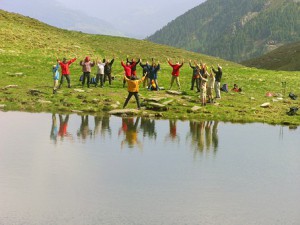 Our compassion expands. As we become more relaxed and comfortable with ourselves, this allows us to notice not only how to be kind to ourselves, but also that everyone around us is also being pretty darn hard on themselves. We become more caring and more interested in others; we become better listeners who really want to make a difference. Being able to hear with our whole being is the most important result of becoming comfortable with being ourselves. With openness and curiosity, we are much more likely to tune into what needs to be done to achieve success in any endeavor.
Our compassion expands. As we become more relaxed and comfortable with ourselves, this allows us to notice not only how to be kind to ourselves, but also that everyone around us is also being pretty darn hard on themselves. We become more caring and more interested in others; we become better listeners who really want to make a difference. Being able to hear with our whole being is the most important result of becoming comfortable with being ourselves. With openness and curiosity, we are much more likely to tune into what needs to be done to achieve success in any endeavor.
Thinking big and trusting our vision. If our desire is to make a difference and help our world, we might follow the advice of Parker Palmer from his 2015 Naropa University Commencement Address: “Take on big jobs worth doing—jobs like the spread of love, peace, and justice. That means refusing to be seduced by our cultural obsession with being effective as measured by short-term results. [M]aintain faithfulness to your gifts, faithfulness to your perception of the needs of the world, and faithfulness to offering your gifts to whatever needs are within your reach.”
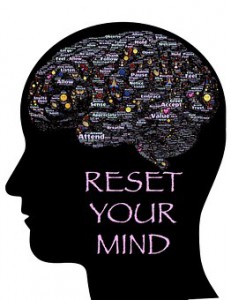 Connecting from our hearts and riding our energy. When we return to our home base, we are returning to our hearts. This is the essence of the instruction to “Be Yourself.” When we feel synchronized in our being, our hearts become a powerful source of energy that radiates confidence, magnetizing people and situations. Learning to ride this energy is the path of a lifetime, and a journey well worth taking.
Connecting from our hearts and riding our energy. When we return to our home base, we are returning to our hearts. This is the essence of the instruction to “Be Yourself.” When we feel synchronized in our being, our hearts become a powerful source of energy that radiates confidence, magnetizing people and situations. Learning to ride this energy is the path of a lifetime, and a journey well worth taking.
The very best way to be yourself is to get to know both the “vast you” and the “personal you.” The better we know ourselves, the better we can exercise the ability to choose, the ability we have in any moment. In making choices, we rely on our ability to be present and relaxed, able to respond. As we practice this approach, and make authentic choices, we become more and more worthy of love and respect. Our kindness will be contagious, our power will be both real and unselfish, and we will be able to realize the life we have always imagined.
Shastri Gayle Van Gils is an organizational consultant, coach, and serial entrepreneur. She holds an MBA in international business and has been teaching meditation for more than 30 years. Gayle is founder and president of the company “Transform Your Culture.” She is committed to shifting the culture of organizations from fear-based to love-based. Gayle is an SIY Certified Teacher, teaching the “Search Inside Yourself” leadership curriculum developed at Google—integrating mindfulness, emotional intelligence and the latest in contemplative neuroscience. She is also a certified consultant utilizing the Barrett Cultural Transformation Tools. Her forthcoming book is entitled, You Are the Key to Change: A Guide to Leadership Through Personal Mastery.
Editor’s note: Shastri Van Gils has a program coming up on March 1st, offered through Shambhala Online: “Social Entrepreneurs — Get Paid to Change the World.” Click here to find out more.
Images courtesy of Pixabay.

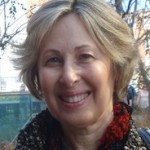




Mar 27, 2016
Reply
Would I be able to simply say, this online journal is the thing that got me as the day progressed today.